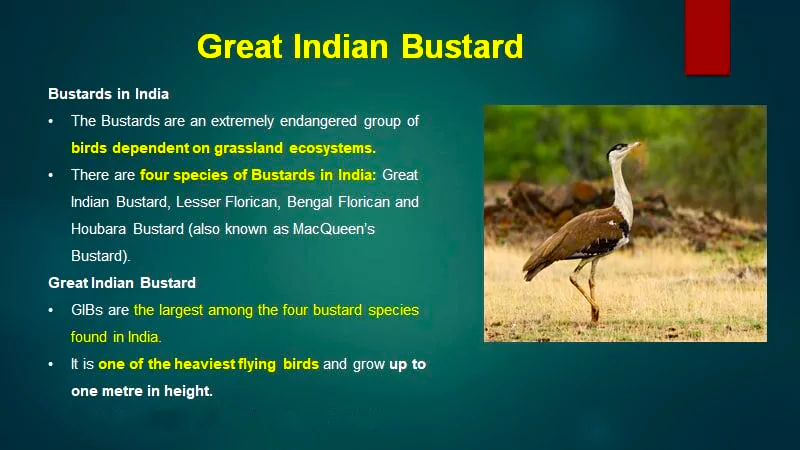![]() 22 Mar 2024
22 Mar 2024
The Supreme Court has formed a committee to address the endangerment of the Great Indian Bustard bird population while considering India’s commitment to renewable energy.
 Other name: The Great Indian Bustard (GIB) is also known as Godavan, Godawan, Hoom, and Gaganbher.
Other name: The Great Indian Bustard (GIB) is also known as Godavan, Godawan, Hoom, and Gaganbher.
| Must Read | |
| NCERT Notes For UPSC | UPSC Daily Current Affairs |
| UPSC Blogs | UPSC Daily Editorials |
| Daily Current Affairs Quiz | Daily Main Answer Writing |
| UPSC Mains Previous Year Papers | UPSC Test Series 2024 |
<div class="new-fform">
</div>